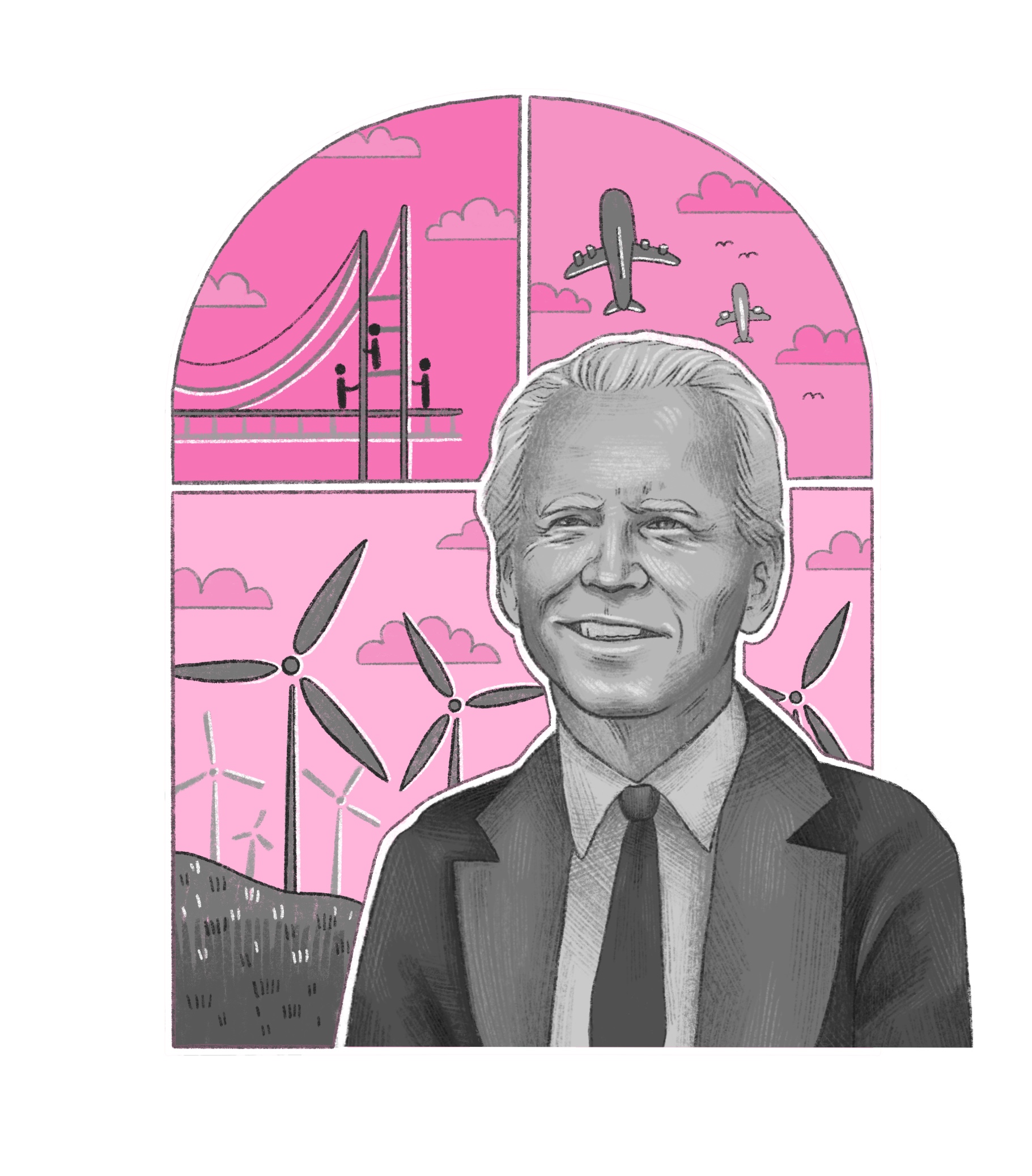President Joe Biden administration’s economic policy, known by some as “Bidenomics,” is a much needed move in a prudent direction—not only moving away from former President Donald Trump’s administration, but away from the standard that’s framed economics for both parties since the mid-20th century.
To understand Bidenomics, it’s best to compare it to the old economic standard, broadly known as the Washington Consensus and labelled by some contemporary critics as “neoliberalism.” This old economic philosophy is best captured in former President Bill Clinton’s claim that “the era of big government is over.” The framework prescribes welfare austerity, market deregulation, supply-side tax cuts and a focus on combating inflation over unemployment (i.e., tight monetary policy); it is the paradigm that connects the policies of former President Ronald Reagan to those of former President Barack Obama. It is also the economic paradigm from which the United States influenced global policy, historically via the IMF and World Bank, implementing neoliberal reforms across the developing world.
This shift away from the old economic framework is important to understand, as it shows the key ways Bidenomics serves progressive aims. Critics during the 2020 Democratic primary worried that Biden’s policies were tepid and too centrist, but there’s reason to believe that Biden is actually more progressive on economic issues than his critics say. Greg Ip wrote a high-quality piece on Bidenomics in The Wall Street Journal, in which he details the shift away from neoliberalism that is being taken with Biden’s current economic policy. Though Bidenomics is far from radical, its shift and proposals indicate a government that is more willing to actively support the welfare of the populace.
Bloomberg’s Noah Smith wrote a detailed piece on Biden’s economic platform for Substack, illustrating the shortcomings of the neoliberal system and ways Bidenomics is remedying the aftermath—he illustrates the platform’s boldness, as well as the possible challenges. Still, to understand the boldness of Bidenomics, it’s important to understand the context in which it arose.
It is not necessarily the case that Bidenomic’s move toward larger government spending is a response to pushes from the political left. Biden has framed his platform using rhetoric from across the political spectrum—from the left by relaying support for unions, from progressives by asserting healthcare should be a human right, from anti-globalists by prioritizing domestic job creation in climate policy, and from conservatives by framing the U.S. as being in competition with China. Evidently, Biden is willing to adopt economic positions framed within either side of the political divide, and is not bound by the pushes from one coherent political frame.
It’s important to understand that Bidenomics is a product, not a cause, of the economic shift occurring in the aftermath of the Great Recession. The Great Recession forced economists to rethink two neoliberal views: the microeconomic view of human beings as rational agents or “homo economicus,” and the macroeconomic reliance on market prices being accurate. If the latter assumption does not hold, as the Great Recession suggests, it opens the door for the government to play a bigger role in amending market failures. With that in mind, it is still too early in history to pinpoint a definite new “alternative” to mainstream economics; however, within the U.S. there is a particular lean toward government involvement in the economy, i.e. Keynesian economics.
Janet Yellen, Biden’s treasury secretary, has an approach to economic theory with roots deep in Keynesian economics. Though the Keynesian school does not abandon free markets altogether, it does not accept markets will naturally find the efficient outcome; instead, Keynesians argue imperfect markets can lower market efficiency, and seeks to remedy these markets with the power of government. With the Great Recession proving that imperfect markets are real and can cause serious harm to economic prosperity, academic economists resurrected Keynes in the mainstream; though there were always Keynesian-inspired thinkers in academia—such as Paul Krugman, Joseph Stiglitz, Janet Yellen and Robert Solow—it was not until the Great Recession necessitated a new framework for market economies that politicians and policy makers took notice.
It is also appropriate to understand Bidenomics as a continuation of the Obama administration’s economic policy, “Obamanomics.” Both administrations began their tenures amid unprecedented economic turmoil and turned to Keynesian economics as a result. But Obama had a steeper hill to climb as he faced a different economic landscape, and his policies were ultimately grounded in neoliberalism.
In contrast, Bidenomics moves forward in a new landscape. In late 2020, the Federal Reserve shifted its position on inflation; its goal is now to achieve an inflation rate that averages 2% over time, as opposed to strict adherence to 2% at all times. This is likely a response to mainstream suggestions that inflation rates can be higher than 2%, and empirical research arguing that inflation targets could even double without necessarily harming long-term price stability.
Secondly, across various measures—including economic, political and social—Western democracies are experiencing a rise in inequality, and this inequality is not simply a product of “well-functioning markets,” as the neoliberal paradigm suggests. Empirical research indicates that rising inequality is a product of at least three key factors: technological change, access to education and the increasing power of the wealthier classes embodied by the weakening of labor unions. This inequality has contributed to increasing populism and radicalization within both left- and right-wing political ideologies, as people feel more distrust toward institutions and technocratic elites. In America, this distrust is especially felt by youths, minorities and the general working class.
Once we understand the shifts occurring in the dominant economic paradigm, the changes in federal institutions and the apprehensive attitude dominating many Americans, Bidenomics becomes more understandable. In addition to responding to the COVID-19-induced economic crisis, Bidenomics is a much-needed response to a quickly changing world in which the U.S. must domestically reconfigure itself or lose legitimacy within its own borders. As he stated in his campaign, Biden is making an effort to unify the country—an effort to reunify the general public under the institutions of the U.S. and regain trust in a weakening establishment.
Ultimately, it is too soon to judge whether Bidenomics will reinstate faith in American institutions or produce anything resembling a social democracy in the U.S. As it stands, any structural changes will likely parallel the evidence-based suggestions of mainstream academics and experts, insofar as those suggestions are politically popular and viable. Biden would do well to reach further left and attempt to implement the popular policies that could unite left factions within the Democratic Party. And while a willingness to increase the role of government does not inevitably correlate with either social democracy or left-wing politics, it is a good sign for the political left, and the population as a whole, that economic thinking and policy-making is shifting away from the decades old status quo—that is to say, that the era of “the era of big government is over” is over.






